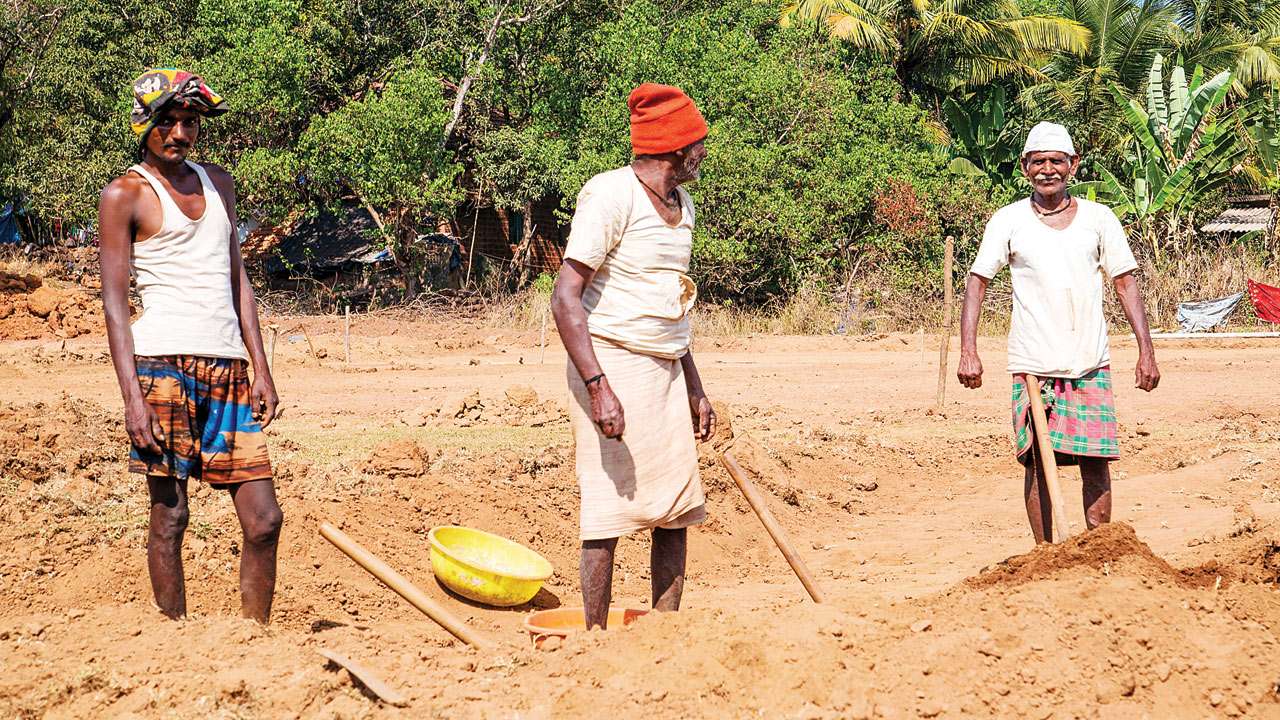
In an iconic scene from the 1996 film Jerry Maguire, Cuba Gooding Jr as Rod Tidwell is seen hopping mad, punching the air with his muscular arms and screaming, “Show me the money!”
The poor rich soccer star wants his agent, a harassed Tom Cruise, to get him a higher-than-ever fee. The star’s million-dollar house is developing cracks, water pipes are bursting...”s-h-o-w me the money” is his clarion call.
As our nation battles the elections, there are so many cracks and fault-lines: from the hilly east to the desert-defined west. And no one seems to be screaming, “Show me the programme!”
The programme that can offer real solutions for real Indians, whose thatched homes are cracked and dry, whose LPG cylinders lie empty for months and whose staple dal-rice-veggie combo, is often way beyond their means.
From Amethi to Kolkata, the rhetoric is so strong and full-throated. Priyanka Gandhi, who has been media-branded as a star-campaigner, was heard asking: “Those who had promised to give 2 crore jobs, ask them where are the jobs? Where are the 15 lakhs they promised in your bank accounts?”
Speaking about key issues to be addressed during the elections, Priyanka stressed on job creation for youth, women security and agrarian distress. The star-campaigner never raised the question: but how will this happen?
Where is the programme? Moreover, where are the jobs, and in which sector of the economy?
For the grand old party that is Congress, MGNREGA (Mahatma Gandhi National Rural Employment Guarantee Act 2005) has been, and will be, their best bet. How come there is complete silence on MGNREGA and its power to put wages in real hands?
As Prof Jean Dreze has explained time and again, employment guarantee under MGNREGA is just the right to do unskilled labour for a subsistence wage. Even though dignified and well-remunerated employment may still be a distant dream, MGNREGA has been a transformative Act. In the interim budget of 2019, presented by interim finance minister Piyush Goyal, Rs 60,000 crore was allocated for this key scheme, up from Rs 55,000 crore of the last budget. And no marks for guessing which states in India have the best record for MGNREGA.
According to statistics recently provided in Rajya Sabha by the minister of state for rural development, Ram Kripal Yadav, West Bengal generated more than 28.21 crore work days under the scheme so far in 2017-18 and spent more than Rs 7,335.31 crore for it. The minister was replying to a question from Trinamool Congress MP, Manas Ranjan Bhunia. He also said that Tamil Nadu occupied the second spot with 22.17 crore work days and spent Rs 5,981.75 crore. Andhra Pradesh was third with 18.16 crore work days, and funds worth Rs 5054.17 crore spent.
Bhunia took the opportunity to point out that the performance of BJP-ruled states such as Goa, Gujarat and Uttar Pradesh was “not impressive.” Goa is ranked at the bottom with 94,000 work days and spent funds worth Rs 2.47 crore. Gujarat generated 2.93 crore work days and spent funds worth Rs 793.50 crore, while Uttar Pradesh generated 15.6 crore work days and utilised funds worth Rs 3701.54 crore.
If UP’s utilisation of MGNREGA funds is half that of West Bengal, why is it not a full-bodied election campaign of not just the Congress, but also Samajwadi Party and the Bahujan Samaj Party?
Silence speaks louder than poll speeches. There have been tweets of Akhilesh Yadav accusing Prime Minister Narendra Modi of ‘not releasing wages’ of MGNREGA workers. But none of the national leaders has sought to harness the power of this Act and bring it to the forefront.
The Communist Party of India (Marxist) chief, Sitaram Yechury, also seems to be in the same boat, of rarely taking a holistic view of the rural and agrarian crisis. Yechury’s letters to the prime minister, routinely released to the media, are asking to give farmers the “right to sell” their produce at the minimum support price, or MSP, and also guarantee automatic annual review of the MSP - that is, at least 50 per cent more than the input costs as established by the Commission on Agricultural Costs and Prices (CACP) for that year.
MSP, as most realise, is just one among the many recommendations of the Swaminathan Committee Report.
MSP does not particularly help raise agri-productivity or prosperity. It is of little benefit to small farmers anyway. The farm sector needs comprehensive support in terms of credit, insurance, connectivity, marketing...the list goes on. Yet the 2019 electioneering has never brought these issues to the poll-battlefield. The rhetoric is about raising farm productivity; the question is how? Once again there is a deafening silence. When the environment ministry was under Prakash Javadekar, he had listed out measures like creating exclusive dairy plants for native cows, producing cow fodder under MGNREGA and empowering animal welfare boards to take action against illegal smuggling and slaughtering in order to conserve “gauvansh” and “gaushalas” (cowsheds) in the country. Full marks to the NDA government for understanding issues pertaining to the proverbial cow-belt and giving cows their due!
“ My ministry is working on a plan to ensure that the “gaucharbhoomi” (grazing land for cows) is protected and government programmes like the MGNREGA be utilised to produce healthy grass for cows, which can be subsequently given “free” to farmers and people who have such livestock,” he said.
“I make miracles happen,” proclaimed Rod Tidwell the soccer-star in Jerry Maguire and his dialogue has become a lexicon of Hollywood history. In India of 2019, we sweat in the summer heat and wait for miracles till the cows come home.
Author is a journalist, researcher, writer and communications consultant